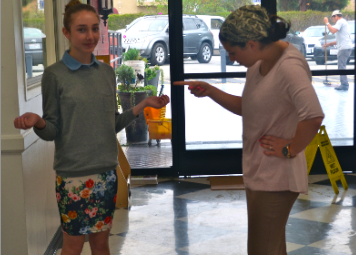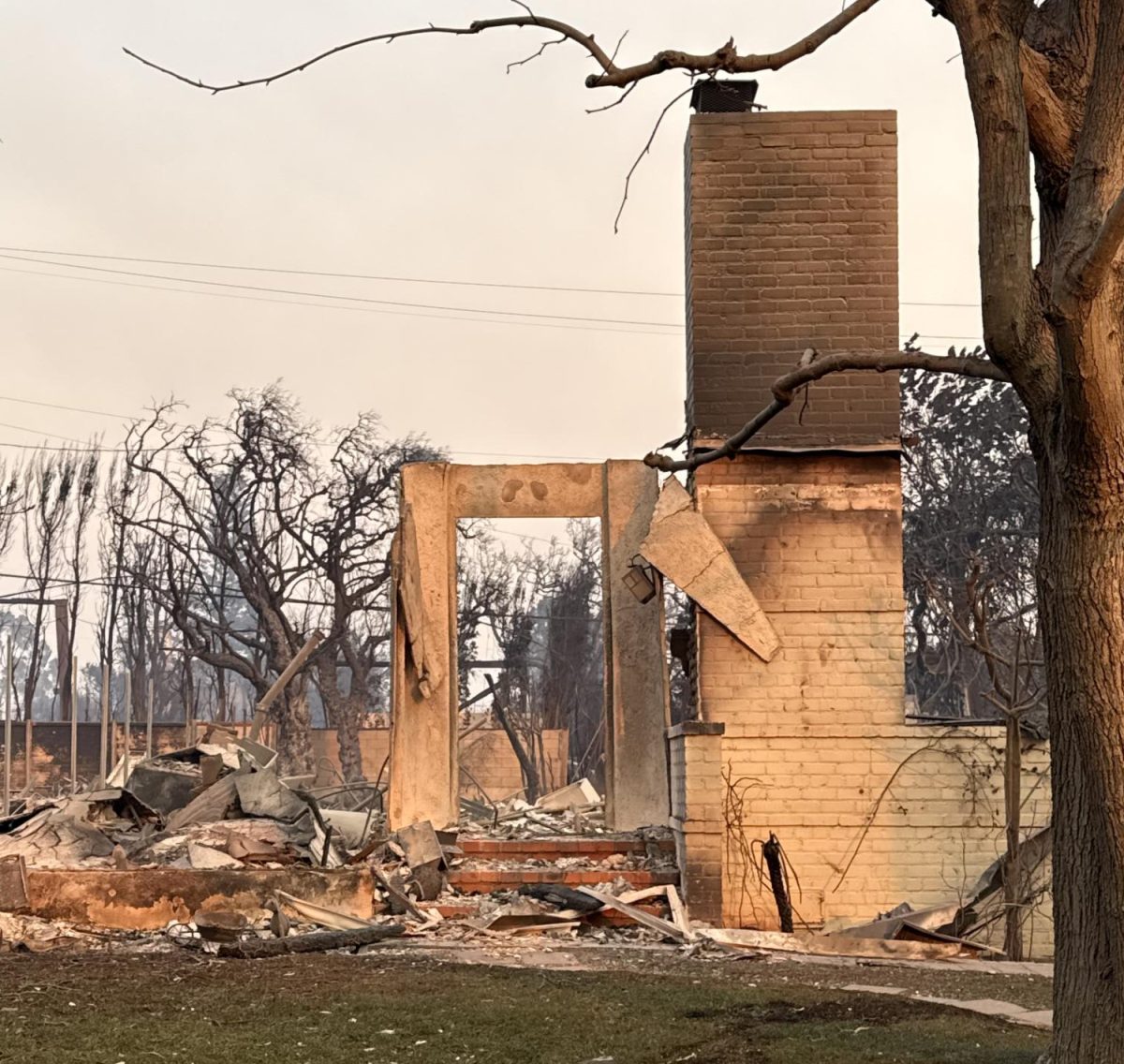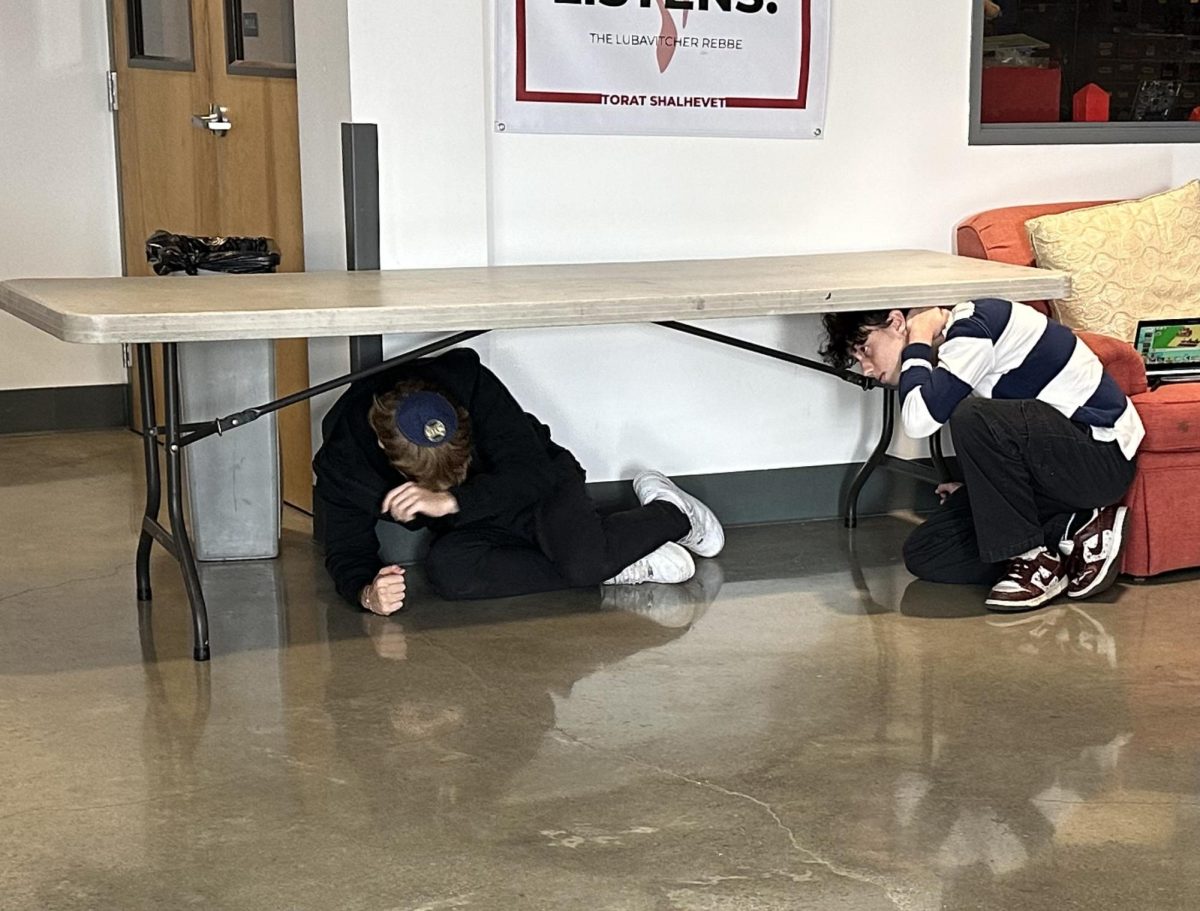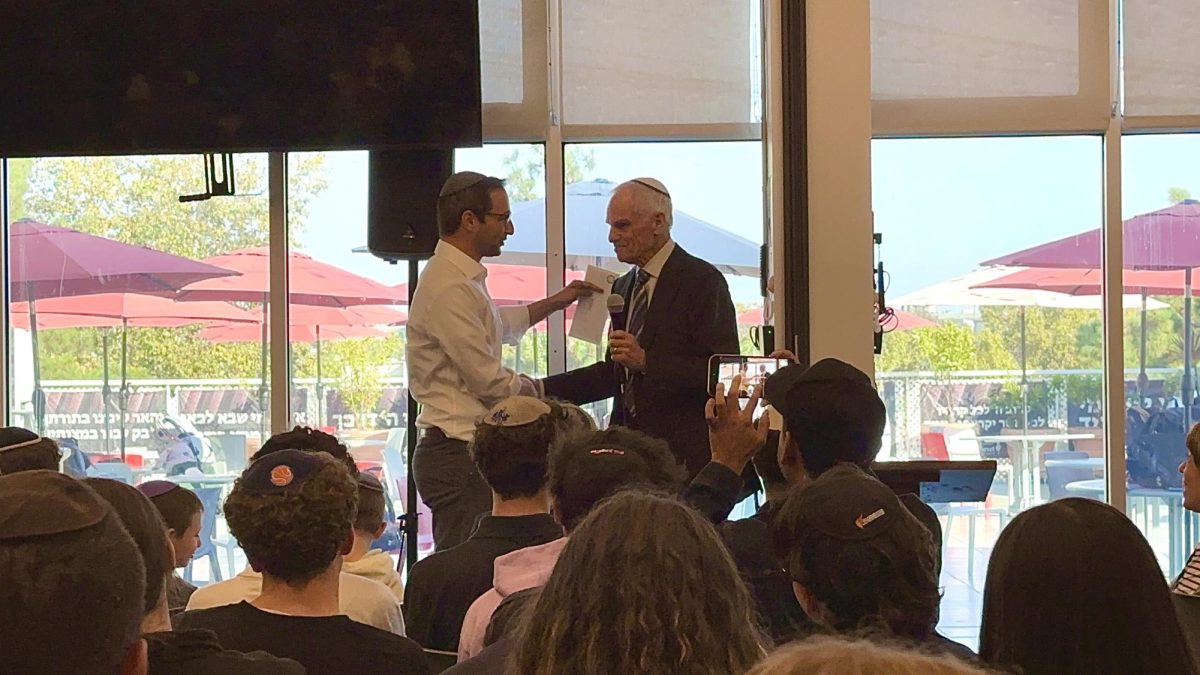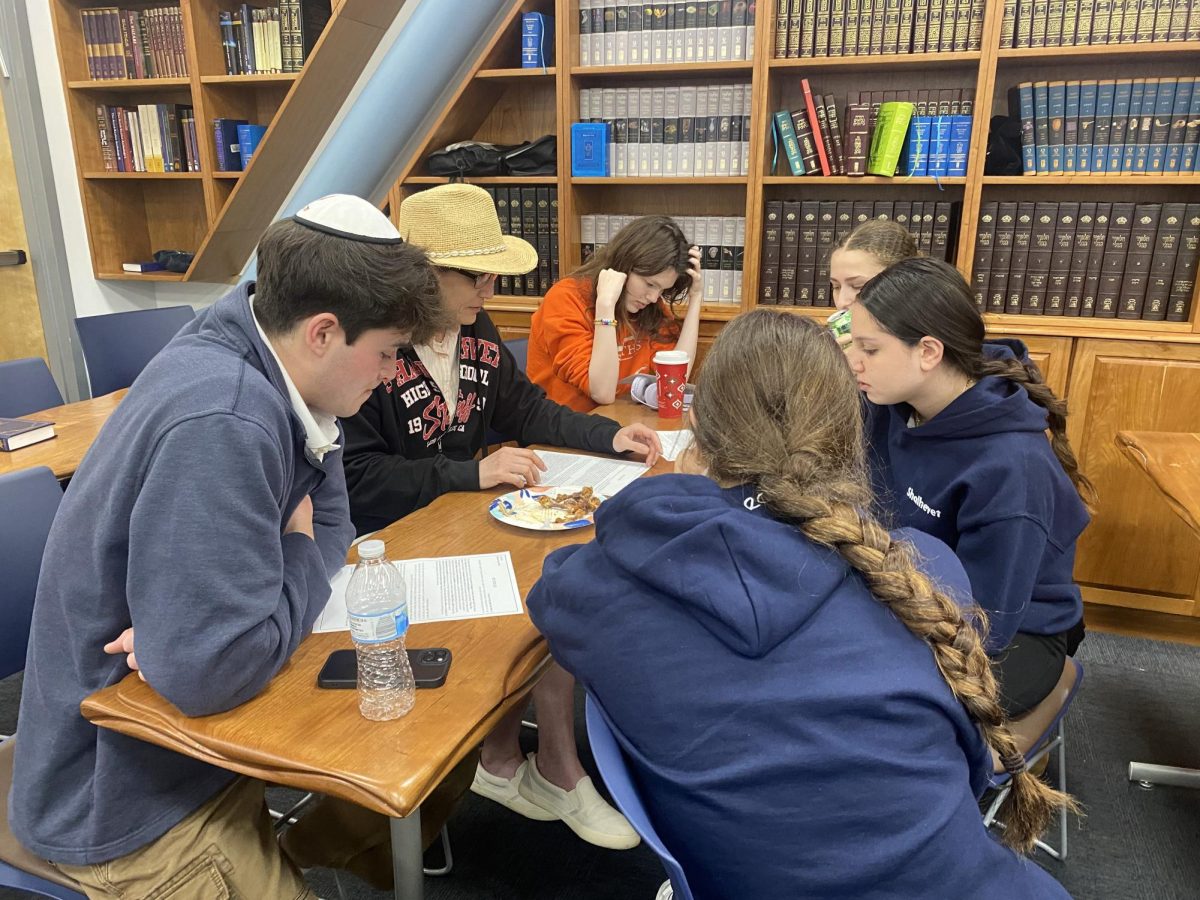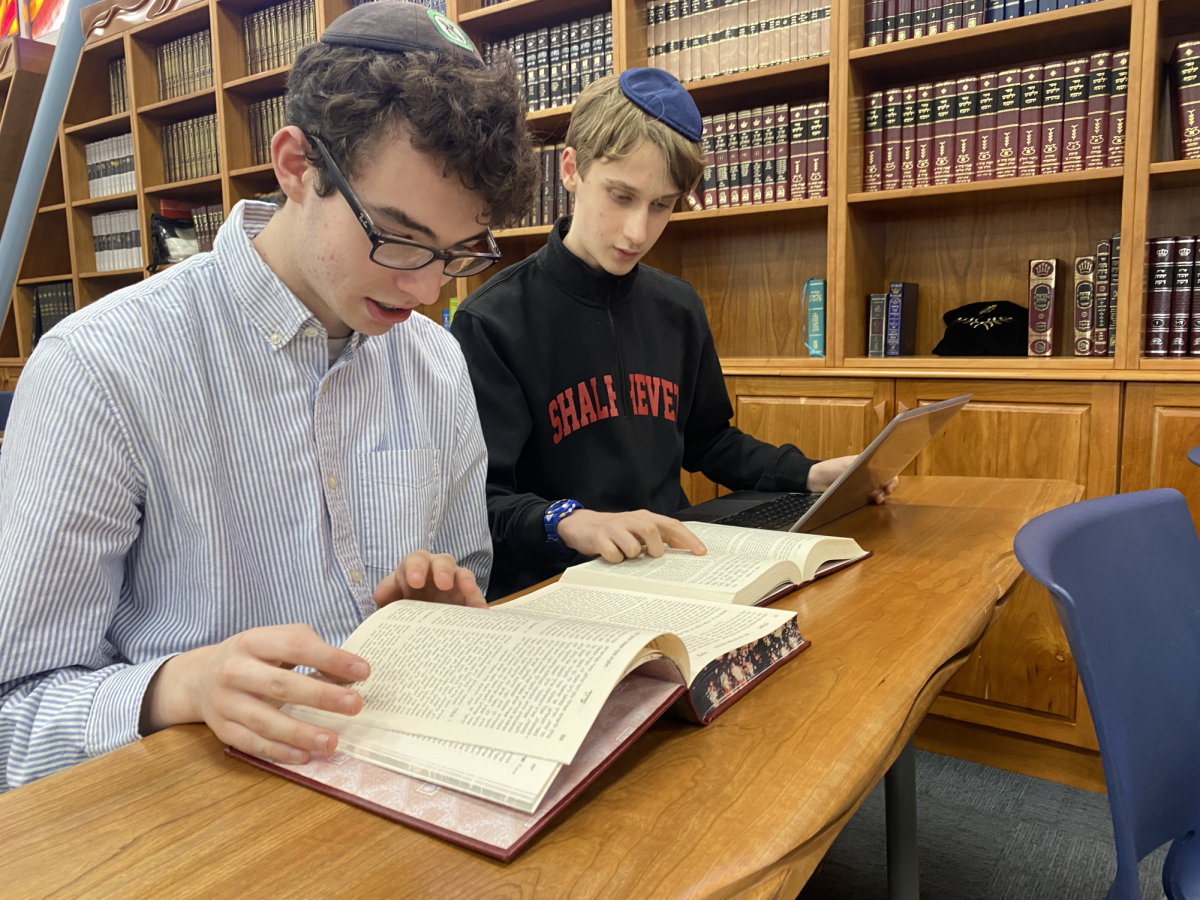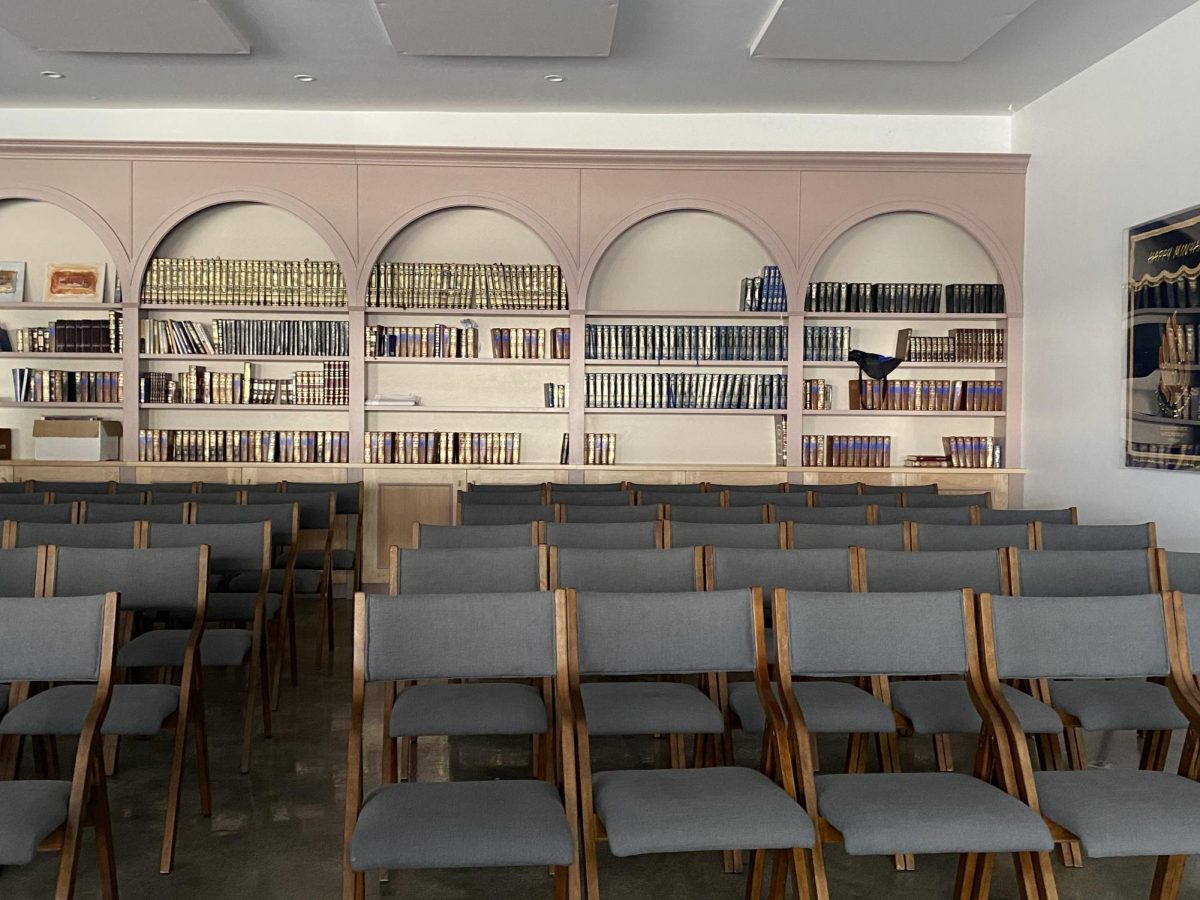For the last three weeks of school, female students were getting skirted in the morning, and not necessarily for halachic reasons.
In the past, the excuse for skirting – that is, for being sent to change or go home for wearing a skirt that’s too short — has been that a knee cannot appear if a girl is sitting down.
However Judaic Studies Director Noam Weissman said the administration is looking for consistency, rather than an exact measurement.
“We are not hyper-focused on the exact length,” said Reb Noam Weissman. “We want them to follow the dress code we put out.”
The school’s dress code policy is that a girl’s skirt must fall to the knee at least, not higher; lower is permissible.
Reb Noam said he wants students not to worry about dressing to pass by the administration, or because of a severe halachic restriction. Rather, the dress code is a school rule to follow when getting dressed in the morning, he said, so a girl does not have to think about her appearance or getting caught.
“We don’t want them to be thinking about us (the administration) in the morning when they get dressed,” Reb Noam said.
Nevertheless Shana Chriki dresses in the morning:
“I know that they are gonna say something in the morning so I just put on a long skirt,” Shana said.
The Torah, meanwhile, has a dress code of its own, though there are different opinions as to what it means.
The Gemara Brachos 24a says that shok b’isha erva – the shok of a woman is erotic. A similar phrase, kol b’isha erva, is used to say that a woman’s voice is erotic, or provokes sexual temptation of men. Kol means “voice,” and shok usually means knee.
Although nowadays seeing a girl’s knee may not seem too revealing, the law stands from generation to generation.
However, the word shok is used in Vayikra 7:32 to describe the thigh of an animal. Using that meaning In this case, skirts that cover the thigh would seem permissible and, as Reb Noam said, the knee position does not matter, rather if it Is a question of covering the thigh.
Since there are proofs as to why the knee may be visible, then why do other schools such as Bais Yaakov restrict any sort of visibility of the leg?
In Israel, stricter opinions follow Tosafos, which states in Gemara Brachos that shok means the calf area for a human, but the thigh area for an animal. He holds that there is a distinction between man (or woman) and animal, and that this is a basic understanding as to why the more traditional opinions hide any visible leg skin.
But in America, the wife of the great Rabbi Moshe Feinstein wore knee-length skirts.
Mr. Weissman did not say the reason that more right-wing Orthodox schools in America enforce a longer skirt length is for a halachic length; rather they expect modesty and unity.
At YULA Girls High School on Robertson Boulevard, the rule is for the knee to be covered. But YULA freshman Leiba Mentz believes that her school sets their rules not necessarily because of a halachic skirt length.
“[A skirt] has to cover your knees because it’s not fair to the rabbis if it’s not tzniut [modest],” said Leiba.
Shana believes that it is logical to rule leniently in this situation:
“I think above the knee is appropriate because if it was below the knee no one would actually follow that,” Shana said.
Dress code skirt crackdown was about covering the ‘shok’ — but what is a ‘shok’?
By Mati Hurwitz, Torah Editor
June 21, 2013
More to Discover
About the Contributor

Mati Hurwitz, Sports Editor
Mati Hurwitz started writing divrei Torah for The Boiling Point as a freshman and went on to be editor of the Torah section for almost two years before becoming Sports Editor and serving on the Editorial Board as a senior. As Summer Editor-in-Chief in 2014, he oversaw the Boiling Point’s Rockower Award-winning coverage of the Gaza War and was one of the winners himself. Mati loves spending time at his shul and in his community in Valley Village, serving as the gabbai of the Shaarey Zedek Teen Minyan. He plans to attend Yeshivat Har Etzion next year.

